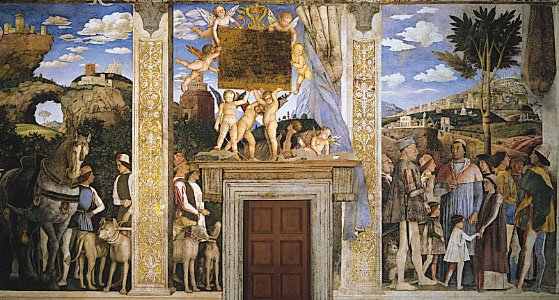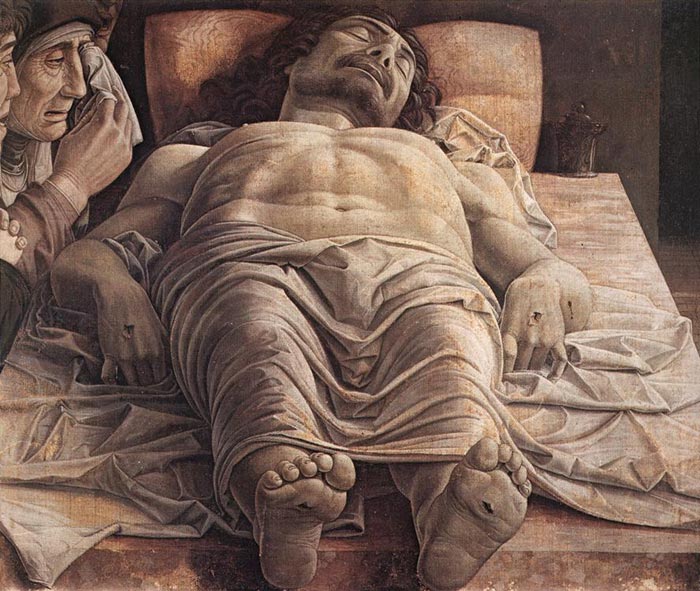
The Lamentation over the Dead Christ
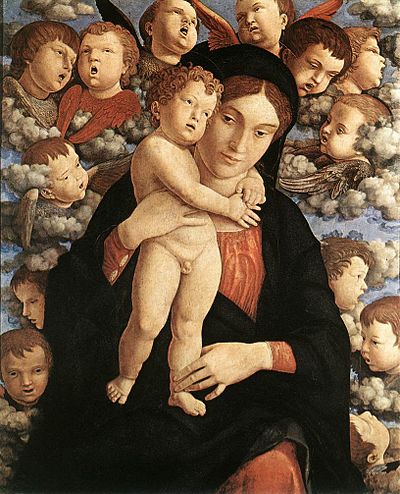
The Madonna of the Cherubim (1485).
Starting early at the mere age of 10 in the city of Padua (ca. 1441 C.E.), Andrea Mantegna would start training as an apprentice under his legal guardian, painter and antique-collector Francesco Squarcione for his recognizable natural talent and understanding of art.
By the age of 17 (ca. 1448 C.E.), Mantegna moved on beyond Squarcione’s guardianship in order to establish his own footing in the art industry of Padua. The first official commission he had was to paint an altarpiece for the Church of Santa Sofia, which was highly unusual, for artists as young as Mantegna to get such an important commission as his first work.
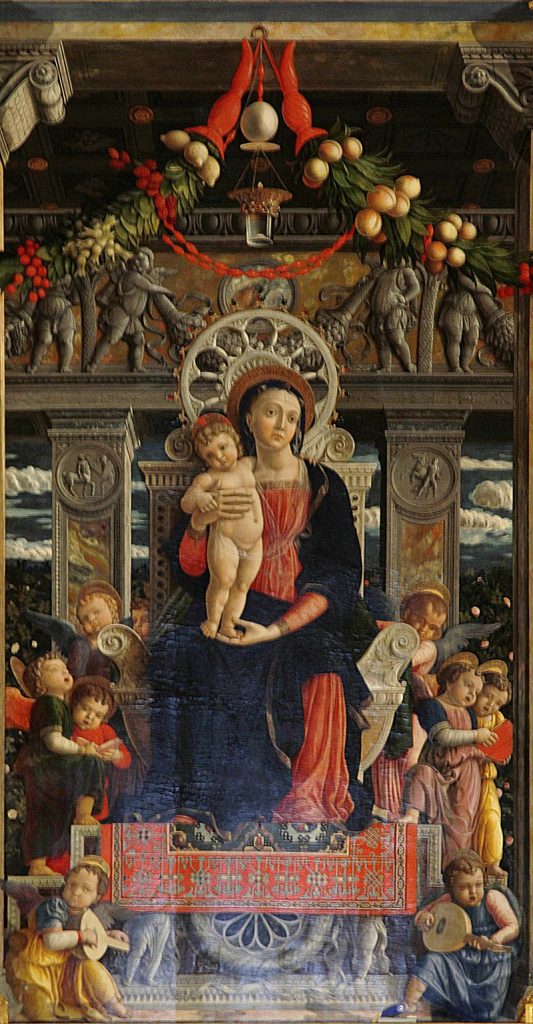
Andrea Mantegna, though not financially fortunate throughout his life, continued working until the age of 74 (ca. 1506 C.E.) and passed on his legacy to his son, who unfortunately passed not long after his father. Mantegna is highly regarded in art history for being one of the first real renaissance artists and for his spatial illusionism used in frescoes and his sacra conversazione (depiction of Madonna and Child with saints) that artists like Giovanni Bellini (Mantegna’s brother-in-law) and Albrecht Dürer (German painter) followed. “[Mantegna’s] invention of total spatial illusionism by the manipulation of perspective and foreshortening began a tradition … followed for three centuries” (Sheard, Wendy Stedman) and the most prominent example is Camera Degli Sposi (“Room of the Bride and Groom”)
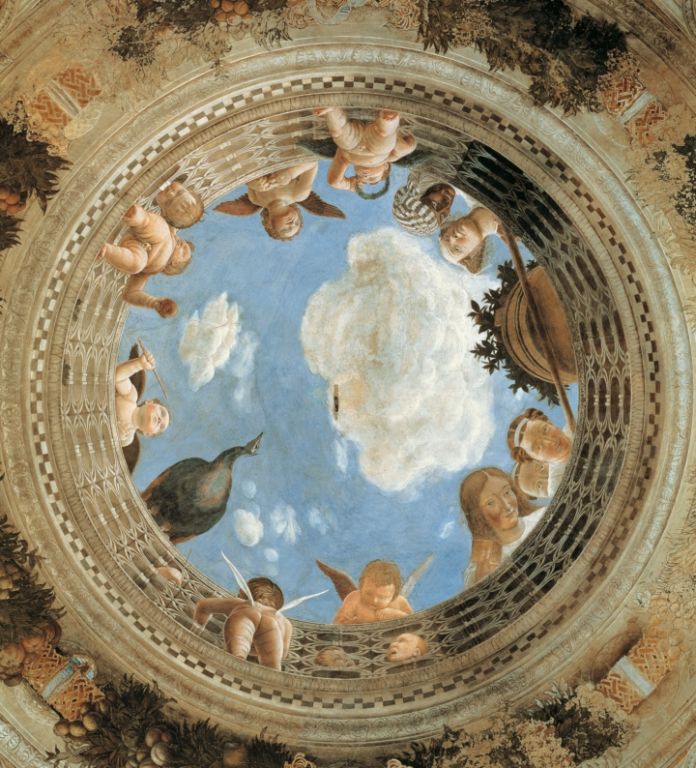
Camera Degli Sposi (“Room of the Bride and Groom”), 1474
The illusion of depth, especially in the case of Camera Degli Sposi, where if you were to stare up at it the painting would look as if the ceiling opened up to show the blue sky, is an amazing technique that applies another level of realism. The ingenious idea of making a painting share the same physical space as the viewer makes looking at the painting feel real as if you were looking out the window. Mantegna introduced this concept and developed it all by himself, which is an incredible achievement for the early renaissance, as it propelled artists’ understanding of physical space and its relationship to the viewer and use of visual tricks to fool the viewer. Andrea Mantegna is and should be regarded highly for his development of spatial illusionism that evolved into the many illusionism techniques utilized by artists in different forms of media to add depth and effect to their work.

Arrival of Cardinal Francesco Gonzaga
Sheard, Wendy Stedman. “Andrea Mantegna.” Encyclopædia Britannica, Encyclopædia Britannica, Inc., 9 Sept. 2019, https://www.britannica.com/biography/Andrea-Mantegna.
Mattioli, Massimo. “Immagini Della Camera Degli Sposi Di Andrea Mantegna. Il Capolavoro Mantovano Riaprirà Il 3 Aprile Dopo i Lavori Di Adeguamento Strutturale e Antisismico.” Artribune, 11 June 2015, https://www.artribune.com/tribnews/2015/02/immagini-della-camera-degli-sposi-di-andrea-mantegna-il-capolavoro-mantovano-riaprira-il-3-aprile-dopo-i-lavori-di-adeguamento-strutturale-e-antisismico/.

